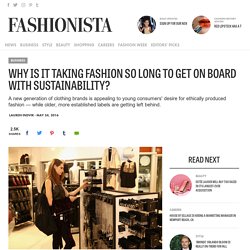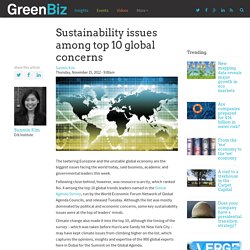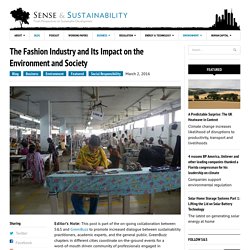

Nike Introduces Flyleather, Its Latest 'Super Material' NEW YORK, United States — In 2015, Nike set the ambitious goal of nearly doubling the size of its business in just five years.

That's $50 billion in annual revenue by 2020, implying a compound annual growth rate of roughly 10 percent. That same year, the company also set a moonshot goal of halving the environmental impact of the products it sells by reducing waste, using renewable energy and shrinking its carbon emissions.
WORKERS. COTTON. CLIMATE CHANGE. OCEAN WASTE. AIR POLLUTION. Ethical Fashion Initiative. Why Is It Taking Fashion So Long to Get on Board With Sustainability? These days, it's hip to be green.

The conscious consumer movement that has changed the way Americans buy their food, choose their beauty products and fuel their cars over the past decade or so has, in more recent years, extended to fashion, giving rise to corporate responsibility initiatives from companies as diverse as luxury conglomerate Kering, outdoor supplier Patagonia and fast-fashion behemoth H&M, as well as a host of startups looking to cater to ethically minded shoppers, like Reformation and online retailer Zady.
Sustainable, or eco, fashion is not a new concept. Americans' concern with how their clothes are made — and the social and environmental consequences of their manufacture — has waxed and waned over time, peaking with the political and social movements of the late '60s and '70s, and again in the early '90s, when Nike and others came under fire for employing sweatshop labor abroad. Fashion and sustainability - Environmental and social costs of our clothes. “Story of the blues In a glass-and-steel mall with double doors and escalators, you will find it… a wide-open jumble of a shop on a corner site, piled high with jeans, sweatshirts, casual trousers and yet more jeans.

And somewhere in the middle, on a dais, there they are, under a huge sign saying: "Famous Brands for £19.95. " Just a pair of jeans, nestling among dozens of identical others. Blue stonewashed denim five-pocket jeans, straight leg, zip fly, "wash inside out separately", it says on the inside label. 100% cotton. Ethical fashion brands target mass market. Sustainability issues among top 10 global concerns. The teetering Eurozone and the unstable global economy are the biggest issues facing the world today, said business, academic and governmental leaders this week.

Following close behind, however, was resource scarcity, which ranked No. 4 among the top 10 global trends leaders named in the Global Agenda Survey, run by the World Economic Forum Network of Global Agenda Councils, and released Tuesday. Although the list was mostly dominated by political and economic concerns, some key sustainability issues were at the top of leaders’ minds. Climate change also made it into the top 10, although the timing of the survey – which was taken before Hurricane Sandy hit New York City – may have kept climate issues from climbing higher on the list, which captures the opinions, insights and expertise of the 900 global experts here in Dubai for the Summit on the Global Agenda.
Resource scarcity is the most controversial topic. The Fashion Industry and Its Impact on the Environment and Society. Editor’s Note: This post is part of the on-going collaboration between S&S and GreenBuzz to promote increased dialogue between sustainability practitioners, academic experts, and the general public.

GreenBuzz chapters in different cities coordinate on-the-ground events for a word-of-mouth driven community of professionals engaged in sustainability, bringing sustainability leaders together to connect with each other and to discuss specific sustainability topics. S&S will publish excerpts, summaries, and discussions generated by these events in order to facilitate on-going debate and make the information presented at these events available to a world-wide audience. When we think of climate change, certain sectors, such as agriculture and transportation, are most commonly considered key in addressing climate change posed challenges.
Behind fashion shows and catwalks, what we wear everyday has become a popular topic of discussion. It seems fair to say that we are wearing Earth down.